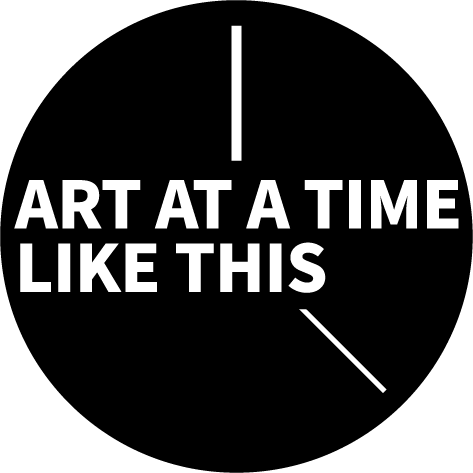
William Powhida
As the crisis has unfolded, I’ve continued to work on the paintings for the show--Twenty Twenty at the Aldrich Museum, postponed to September--in an uneasy, distracted manner as I follow the news, talk with friends and family, and speculate about what the world will look like when this period of relative, physical isolation ends. I was not particularly optimistic about our chances before the crisis, and I am less so now. We are not very good, as a society, at addressing things that we cannot see right in front of our eyes, such as the slow-moving effects of the climate crisis, the accumulation of capital, or the erosion of the infrastructure of our Federal government. People need direct causal links that threaten them and their immediate circle to begin to change their behaviors and attitudes. As images eventually emerge from hospitals and parking lots of bodies hooked up to respirators and body bags in trailers, the scope of the Corona virus pandemic will be made clear. These are not images that I want to see in the world, but will show us the cost of not being willing to plan for things we can’t yet see.
For Art at a Time Like This, I am sharing some of the works on paper from Complicities, and a wall study I am working in my limited studio space that incorporates the portraits of political figures and candidates I have been painting. These will eventually incorporate landscapes and film stills that depict possible futures based on our political decisions in the present into something like the work from Complicities. Many of these political figures will fade away from the public consciousness after dominating the social media discourse for the better part of 2019, which feels like a lifetime ago. The public’s deep emotional investments in candidates quickly dissipated following Biden’s consolidation of the Democratic primary, and now people seem to be simply hoping there is an election in November. My hope during this period of intense disruption is that the public will see that not only is rapid change possible, but also see the failures of incrementalism in the face of a crisis. Perhaps we will be able to start to imagine different scenarios for our shared, interconnected future and the people that will come after us.
The Sacklers (Family Tree), 2019
watercolor, ink, The New York Times, and the Internet on paper mounted on dibond, 53 x 40 inches
Neoliberalism (Policy), 2019
watercolor, ink, The U.S. Government, and the Internet on paper mounted on dibond, 23.5 x 54 inches
Timeline Study (Twenty Twenty), 2020
Ink, graphite, and watercolor paintings mounted on panel, 6 x 8 feet
Biden (Winter 2020), 2020
Watercolor on paper mounted on panel, 8 x 10 inches
Trump (Winter 2020), 2020
Watercolor on paper mounted on panel, 8 x 10 inches
Koch Industries (Private Company), 2019
watercolor, ink, Rolling Stone, and the Internet on paper mounted on dibond, 38 x 54 inches
William Powhida
All images courtesy of the artist and Postmasters Gallery






